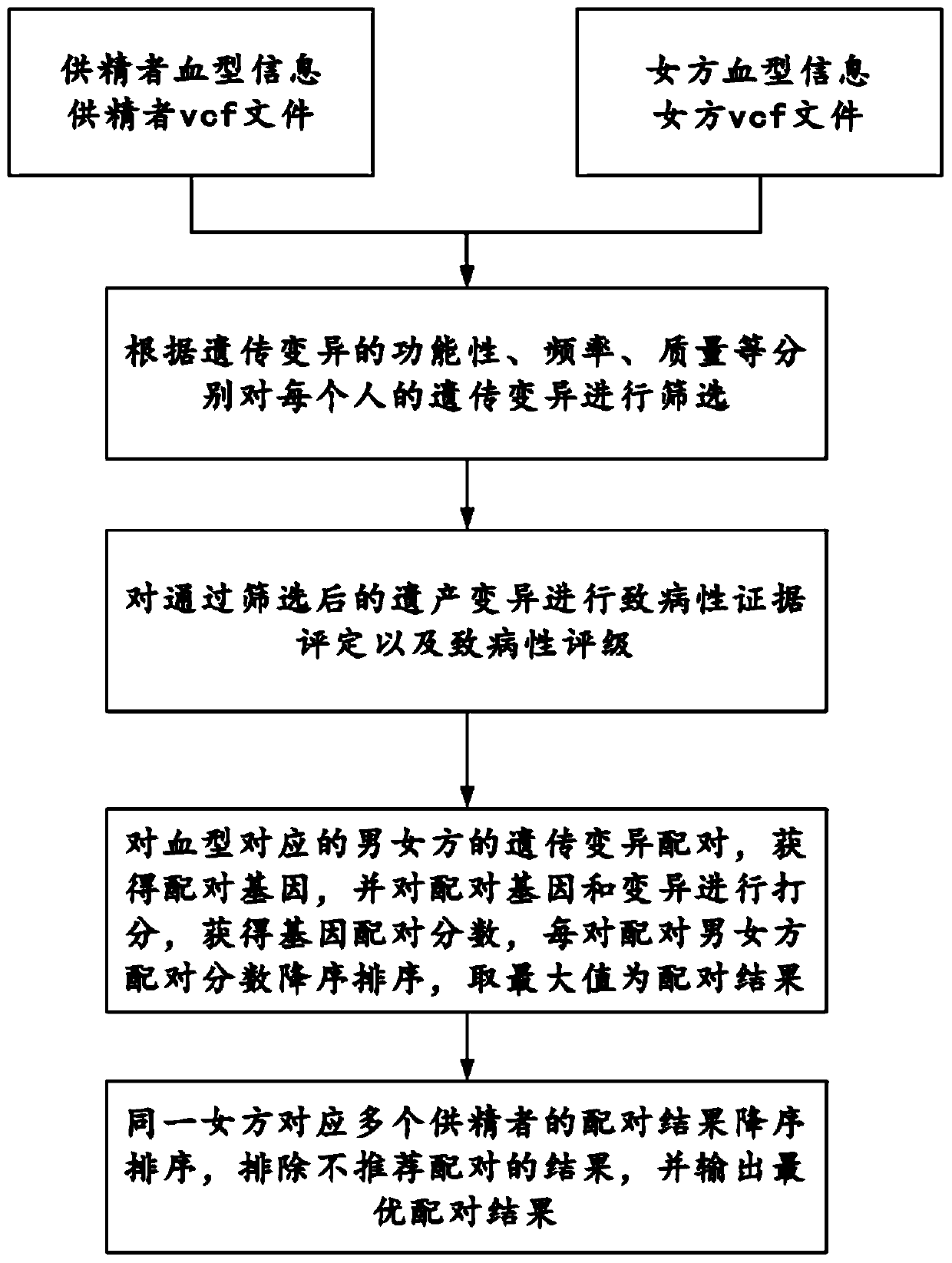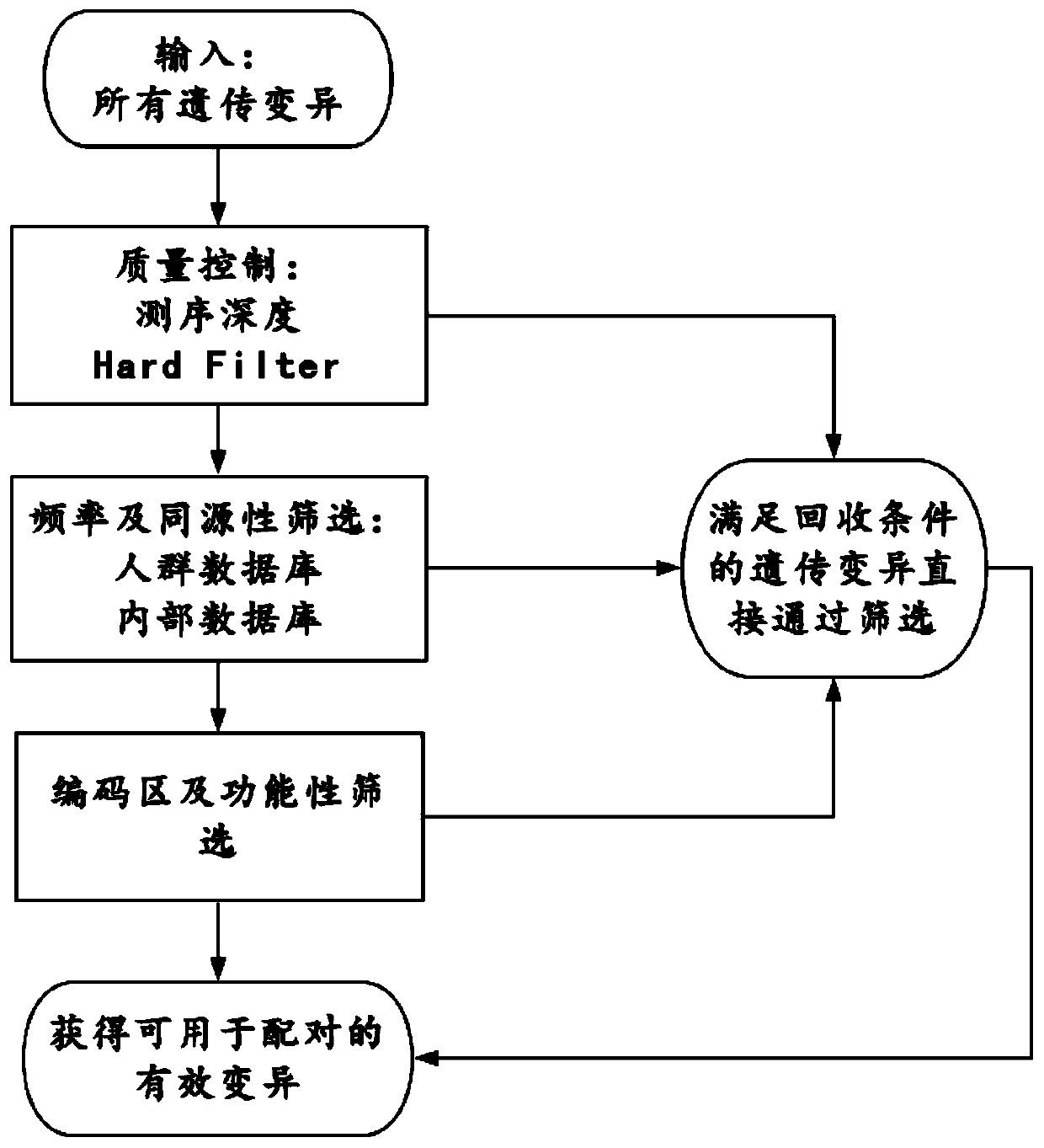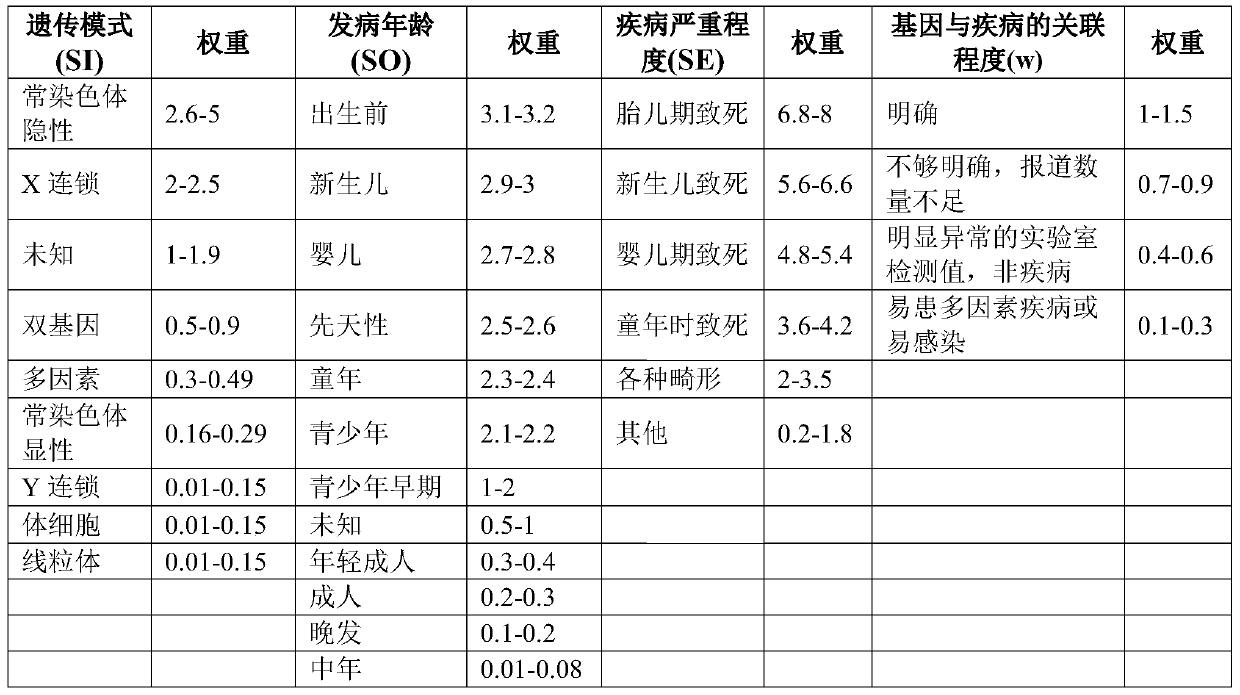Genetic risk early-warning method for auxiliary reproduction sperm supplying strategy and system
A technology for assisted reproduction and genetic risk, applied in the fields of bioinformatics, instrumentation, genomics, etc., can solve the problem of inability to accurately assess the fertility risk of autosomal recessive genetic diseases in sperm donor volunteers
- Summary
- Abstract
- Description
- Claims
- Application Information
AI Technical Summary
Problems solved by technology
Method used
Image
Examples
Embodiment 1
[0137] Example 1 Acquisition of Genetic Information of Sperm Donor Volunteers
[0138] Obtaining the genetic information of sperm donors usually includes the following steps:
[0139] 1) Genetic counseling interview: exclude sperm donor volunteers with a family history of genetic diseases.
[0140] 2) Sign the informed consent form: the informed consent form has been approved by the ethics committee, and the staff fully informed the content of the informed consent form and filled it out voluntarily.
[0141] 3) Obtain peripheral blood: Obtain 1-2ml of peripheral blood during routine blood tests.
[0142] 4) DNA extraction: Genomic DNA was extracted from blood samples of volunteers using the QIAamp DNA Blood Mini Kit (250) kit from QIAGEN.
[0143] 5) Gene detection: Combined application of whole exome sequencing (WES) technology and other genetic detection technologies for special regions of the genome (such as CNV-seq, wait). Dozens of pathogenic variants with a high car...
Embodiment 2
[0145] Example 2 Acquisition of genetic information of pregnant women who need donor sperm for assisted reproduction
[0146] Obtaining the genetic information of a woman who needs donor sperm for assisted reproduction usually includes the following steps:
[0147] 1) Sign the informed consent form: the informed consent form has been approved by the ethics committee, and the staff fully informed the content of the informed consent form and filled it out voluntarily.
[0148] 2) Obtain peripheral blood: Obtain 1-2ml of peripheral blood during routine blood tests.
[0149] 3) DNA extraction: Genomic DNA was extracted from the blood samples of pregnant women using the QIAamp DNA Blood Mini Kit (250) kit from QIAGEN.
[0150] 4) Gene detection: Combined application of whole exome sequencing (WES) technology and other genetic detection technologies for special regions of the genome (such as CNV-seq, wait). Dozens of pathogenic variants with a high carrier rate in the Chinese po...
Embodiment 3
[0152] Example 3 Pairing experiment between sperm donor volunteers and pregnant women who need donor sperm for assisted reproduction
[0153] 1. Data preparation
[0154] 1.1 According to the methods described in Examples 1 and 2, obtain the vcf files of the genetic variation information of multiple sperm donors and pregnant women.
[0155] 1.2 Selection of family or social factors: such as blood type information, pregnant women can choose a sperm donor of a certain blood type. Enter the blood type information selected by the sperm donor and the pregnant woman (optional step).
[0156] 1.3 Automatically obtain the sperm donor with the same blood type selected by the woman to be pregnant for subsequent analysis (optional step).
[0157] 2. Preliminary screening of variants
[0158] 2.1 Quality Control
[0159]Quality According to the Hard filter parameters recommended by GATK, the quality of SNP and Indel is screened separately. Mutation sites that meet the following param...
PUM
 Login to View More
Login to View More Abstract
Description
Claims
Application Information
 Login to View More
Login to View More - R&D
- Intellectual Property
- Life Sciences
- Materials
- Tech Scout
- Unparalleled Data Quality
- Higher Quality Content
- 60% Fewer Hallucinations
Browse by: Latest US Patents, China's latest patents, Technical Efficacy Thesaurus, Application Domain, Technology Topic, Popular Technical Reports.
© 2025 PatSnap. All rights reserved.Legal|Privacy policy|Modern Slavery Act Transparency Statement|Sitemap|About US| Contact US: help@patsnap.com



